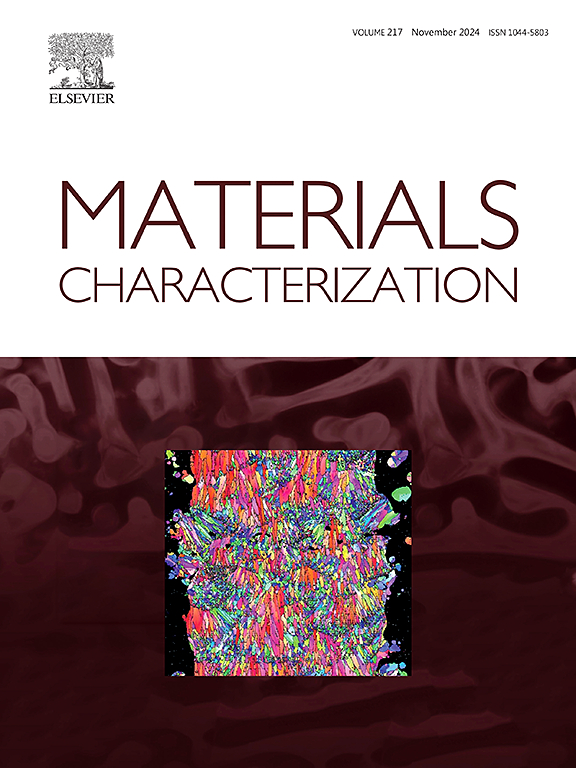Effects of ausforming on the microstructure and stability of blocky austenite in nanostructured bainite
IF 4.8
2区 材料科学
Q1 MATERIALS SCIENCE, CHARACTERIZATION & TESTING
引用次数: 0
Abstract
Nanostructured bainitic steels exhibit high strength and toughness. A potential approach to improving their toughness is enhancing the chemical or mechanical stability of blocky austenite while maintaining the volume fractions of austenite and bainitic ferrite. This study investigates the effects of ausforming at 250 °C with a 20 % strain on the microstructure and stability of blocky austenite and contrasts these effects with non-ausformed bainite. The stability of austenite is assessed by cryogenic treatments. Two types of bainitic ferrite are observed in ausformed bainite. The fine bainitic ferrite forms around austenite twins and has the Kurdjumov-Sachs (K-S) orientation relationship with austenite. In contrast, the coarse bainitic ferrite, which has the Nishiyama-Wassermann (N-W) orientation relationship, creates an interlocking microstructure where blocky austenite is refined and has a high dislocation density. The blocky austenite in the ausformed bainite remains untransformed after the cryogenic treatment, while some blocky austenite in non-ausformed bainite transforms into martensite. These results suggest that two types of bainitic ferrite may form via different mechanisms, and that the interlocking microstructure enhances mechanical stability of blocky austenite by dislocations and block size refinement.
求助全文
约1分钟内获得全文
求助全文
来源期刊

Materials Characterization
工程技术-材料科学:表征与测试
CiteScore
7.60
自引率
8.50%
发文量
746
审稿时长
36 days
期刊介绍:
Materials Characterization features original articles and state-of-the-art reviews on theoretical and practical aspects of the structure and behaviour of materials.
The Journal focuses on all characterization techniques, including all forms of microscopy (light, electron, acoustic, etc.,) and analysis (especially microanalysis and surface analytical techniques). Developments in both this wide range of techniques and their application to the quantification of the microstructure of materials are essential facets of the Journal.
The Journal provides the Materials Scientist/Engineer with up-to-date information on many types of materials with an underlying theme of explaining the behavior of materials using novel approaches. Materials covered by the journal include:
Metals & Alloys
Ceramics
Nanomaterials
Biomedical materials
Optical materials
Composites
Natural Materials.
 求助内容:
求助内容: 应助结果提醒方式:
应助结果提醒方式:


